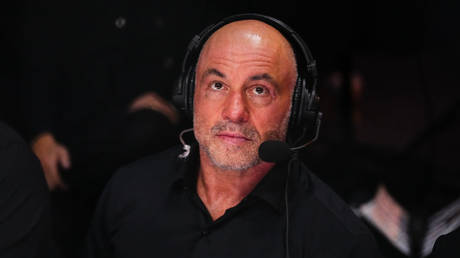Microsoft’s Xbox brand is not doing great. Despite being a pillar of the modern gaming landscape, it seems like Xbox consoles are inconsequential thanks to stiff competition from within and without. Nintendo and Sony are playing to their strengths, and Microsoft itself seems more interested in pushing a platform and subscription than in maintaining its shrinking portion of the market. Add to this huge price increases, for both consoles and the lynchpin Xbox Game Pass itself, and it’s not exactly happy days in Redmond.
Into this fractious and uncertain landscape lands the Asus ROG Xbox Ally handheld, and its more souped-up version, the ROG Xbox Ally X. Launching later this week at $600 and $1,000, respectively, these gadgets are some major firsts for Microsoft. They’re the first Xbox portable devices, even if their claim to being “Xboxes” is mostly a matter of marketing. They’re the first post-Steam Deck portable gaming PCs made explicitly in cooperation with Microsoft and Xbox, though Asus has made two generations before them. And they’re the official debut of the Xbox Fullscreen Mode, Microsoft’s answer to the Steam Deck user interface.

Michael Crider/Foundry
Asus asked me to check out the new Ally hardware at a pre-release event, which was my first chance to go literally hands-on with the device just a week or so before they land on shelves. And while the handhelds themselves are impressive, I don’t think they’re such a huge step forward that they’ll convince anyone who wasn’t sold on the concept already. And the new, semi-exclusive interface is pretty good, certainly an improvement over the pain point of running Windows 11 on smaller handheld devices, but it still needs work even as it’s preparing for a full retail release.
PC gamers who are already fans of this form factor might find a new front-runner in the Xbox Ally, and maybe even the first true rival to the Steam Deck. But combined with the woes of the Xbox platform itself, and a pretty high price tag even if you don’t want the $1,000 upgraded X model, I don’t think this is the Xbox hit that Microsoft has been waiting for.
Fill your hands
The most striking difference between the older ROG Ally design and the ROG Xbox Ally is those highly visible handles, now distinctly jutting from the device’s body instead of smoothly integrated. And it’s no surprise that these are the biggest change in actually using the handheld, too. Gripping onto the gadget was instantly familiar — I could close my eyes and imagine I really was holding an official Xbox controller, as I’ve done for thousands of hours before. It’s comfy is what I’m saying here, and the familiar staggered control layout might be a huge improvement if you have medium or small hands and the Steam Deck’s interior thumbsticks are a pain point.

Michael Crider/Foundry
The more solid grip on the device makes it feel lighter, despite looking considerably chunkier, if only because my muscle memory makes it seem like I’ve held it so often before. This is an impressive trick, since the base model (the one in white) is almost exactly the same weight as the 2024 Ally X. The ROG Xbox Ally X (upgraded, in black, God these names are awful) is a few grams heavier, and feels it. But it needs a bigger, 65-watt battery to handle its more powerful and higher-wattage processor, 35W versus 20W. Even then, I didn’t feel uncomfortable holding it — though I never got to do so for more than about 10 minutes at a time.
Aside from the adjusted ergonomics, the physical experience of the device feels very familiar. With a 7-inch ,1080p IPS display it’s neither the biggest nor the sharpest screen available in a PC handheld. But it’s plenty smooth at 120Hz, and 500 nits of brightness should keep it visible in almost any situation. The only other big shift is a dedicated Xbox button, conspicuously hanging out near the left analog stick. The upgraded black model also gets haptic feedback in its triggers, though I didn’t play any game that seems to take advantage of it — this is still a rare find on PC games since it’s mainly a PS5 feature.

Michael Crider/Foundry
So if you’re already comfortable with any given 7- or 8-inch PC gaming handheld, I think you’ll find the Xbox Ally easy to pick up, literally. It’s impressively comfortable, sacrificing only a little extra space (about half an inch wider than the original Ally and a bit thicker). But given that you’ll need either a full bag or a dedicated carrying case for it anyway, I don’t think you’re giving up too much…and it’s still not as wide as the Steam Deck.
Performance
To be honest I’m not in a position to gauge minute differences in performance between the various flavors of PC gaming handhelds on the market right now. For that, be sure to check out Adam Patrick Murray’s coverage over on the PCWorld YouTube channel — he’s a fiend for these things. Both these devices are based on AMD APUs, with integrated graphics that are nonetheless tuned for impressive gaming performance given their size and power limitations. The white Xbox Ally has a Ryzen Z2 A with 4 cores and 16GB of memory, the Xbox Ally X gets a top-of-the-line Ryzen Z2 Extreme with 8 cores and a maximum speed of 5GHz, plus 24GB of memory.
2D games like Hollow Knight Silksong (and those that mix a lot of low-poly 3D, like Hades) seem more than comfy running smoothly on the hardware, with no gaps or stuttering. That’s hardly surprising, since even the low-priority integrated graphics on budget laptops can handle these games with few, if any, issues. The more interesting question in this application is how long the battery can last while intelligently giving the game just enough juice to keep it stable.

The ROG Xbox Ally X and Xbox Ally, disassembled, on top, Ally X and Ally on bottom. Look at them guts!
Michael Crider/Foundry
More strenuous games were a different story. Playing the graphically intense but well-optimized Forza Horizon 5 on the Xbox Ally X was a treat, with smooth racing at 60-80fps and plenty of graphical extras…let down by a very obvious dip in 1 percent frame rate lows every 30 seconds or so. This is, to my mind, perfectly acceptable — despite years of optimizations, we’re still talking about chips that were originally designed for laptops without discrete graphics cards. If you demand uninterrupted 4K/240Hz brilliance, you’re not playing on a handheld anyway (or you’re streaming from something more powerful).
But let’s say you’ve got a hankering for more power, and you also have a massive budget. Asus is also launching the latest generation of its XG Mobile dock along with the new Xbox Ally. These docks come with discrete laptop GPUs (Nvidia RTX 5070 Ti and 5090 for the newest versions) and a Thunderbolt 5 port. Not only will this max out the connection with the Xbox Ally, it’s compatible with almost any recent laptop or gaming handheld, granting them the boosted power too. This is a marked difference from the original XG design, which needed a proprietary connection designed only for ROG-branded laptops, tablets, and (later) the ROG Ally.

You can plug in an ROG XG Mobile dock to the Ally…or any laptop with Thunderbolt support.
Michael Crider/Foundry
The combination of an explicitly portable device with an extra sizeable hunk of electronics to make it more powerful might seem strange. But Asus representatives told me that the ROG Ally family is the device most frequently paired with the XG dock, despite it being initially marketed as a companion for laptops and Surface-style tablets. Trying out the hardware at the event, I was impressed with the combination of the Xbox Ally X and the 5090-equipped dock, connected to a 4K display and running Gears of War Reloaded at full resolution and its maximum settings. While it wasn’t breaking any records, it consistently hit 80 frames per second at 4K.
We’re also talking about a pricey combination of hardware here. The ROG Xbox Ally X is $1,000, and the 2025 version of the XG Mobile dock with an RTX 5090 laptop card is $2,500. (The 5070 Ti version is a more palatable $1,300.) So $3,500 all-in, not counting the monitor, keyboard, and mouse. That doesn’t mean it’s a direct comparison with a $3,500 laptop — the combination setup is more portable (arguably), and that dock can work with almost any modern Windows-based device. But it’s a lot to ask for in any case.
Windows on handhelds still needs work
The most interesting aspect of the Xbox Ally to me is the new “Xbox Fullscreen Experience,” Microsoft’s answer to the Steam Deck’s software advantage. For the unaware, the Steam Deck runs on a custom Linux-based SteamOS, using the Proton compatibility layer to play Windows-based games when no Linux build is available. It also has a fully custom user interface, adapted from Steam’s Big Picture Mode. That should mean that Windows-based handhelds have an advantage running native software…but the overhead of Windows 11, not to mention its pain points on devices with screens as small as 7 inches, means these more expensive machines are often slower and more cumbersome.

Asus
The Xbox Fullscreen Experience is the solution, or at least it hopes to be. Not only is it offering a more focused, console-style browsing interface, with a unified library from the biggest Windows game stores, it helps the performance side of things by not loading the Windows taskbar, desktop, and various other behind-the-scenes stuff. This should be a one-two punch for the ROG Xbox Ally, making it feel like a much more integrated experience that’s been lacking for Windows handhelds. The Xbox Fullscreen Experience is coming to other devices in 2026, though it’s possible to test it out now if you put in a little elbow grease.
The system is getting something similar to Valve’s Steam Deck Certified program, too. Microsoft calls it the “handheld compatibility program.” Games labelled “Optimized” are good to go with no changes, while those marked “Compatible” might need a few settings tweaks or the occasional touchscreen input, but should run acceptably. A Microsoft representative said of the games tested so far (presumably mostly Game Pass titles), 85 percent fell into one of those two categories. Expect the program to be expanded to more hardware, just like the UI.

This is Forza Horizon running on the Xbox Ally X. Allegedly.
Michael Crider/Foundry
This new approach to handheld gaming is an improvement, to be sure. Focusing on the combination of controller-style navigation and touchscreen makes the device feel a lot more complete and natural. If you told me this really was a portable Xbox, instead of a partnership device running on Windows, I might believe you…until I saw that you can still get to the full desktop if you want to.
And that’s where the cracks started to show. When I first tried to launch Forza, it did so in a strange minimized floating window. That’s not unheard of for a game running on Windows, but it’s annoying, and a clear indication that yeah, the familiar and often clunky Windows 11 is still underneath all this nice UI. It might be smoother and faster than, say, the third-party launcher programs from Asus and Lenovo, but it’s still there. I had to manually close the game and launch it again to try it out.

More weirdness.
Michael Crider/Foundry
Being mindful of this, I tried to launch the standard Windows interface, which was easy enough. When I tried to switch back to the Xbox Fullscreen Experience, the Ally warned me that I should restart to get the intended performance boost. I thought this might mean restarting Explorer.exe or something similar…nope. It reboots the entire device, which takes a solid three minutes or so. Whatever tweaks are being made behind the curtain to keep this thing running smoothly, they aren’t evident in the startup time.
I think that getting a unified, gaming-focused interface, provided and supported by Microsoft, is a great idea. (In fact I asked a Microsoft representative if it was coming to desktops and laptops anytime soon…no comment.) But while I’m sure that both Microsoft and Asus have put a lot of work into this, it seems pretty clear that there are a lot of kinks left to work out, and a lot left to do when this thing gets in the hands of end users.
Ouch, that price tag
Speaking of which…that price. Oof. $600 for a portable machine is a lot, albeit not in the context of Windows-powered handheld PCs launching this year. At that price the ROG Xbox Ally is competing not with the base model Steam Deck, but its OLED upgrade, $550 at the time of writing. And Asus said it intends this version of the device to be for “casual gamers.” Okay…but surely if someone considers themselves “casual,” they’re fine with their phone or tablet, or the console they already own. You can find an original Switch for half that much.
The upgraded ROG Xbox Ally X costs $1,000 USD, which easily makes it the most expensive Xbox ever, if you want to call it that. And it’ll land somewhere between the Series S and Series X consoles in terms of its graphical power. Granted, the Windows OS gives it far more flexibility, to say nothing of the option of throwing it in your bag without needing to lift with your legs. And let’s face it, there’s no major game coming out on Xbox that isn’t also coming to Windows at this point.

Three generations of Ally: Original, top left, Ally X, bottom left, Xbox Ally X, top right, Xbox Ally, bottom right.
Michael Crider/Foundry
If you’re still looking at handheld PCs as an accessible way to get into the latest games, or even at consoles as a more affordable alternative to high-powered PC gaming, the new “Xbox” portables just don’t make sense as a value proposition. Of course there are plenty of people who see no problem dropping more than a grand on a handheld device — our own Adam Patrick Murray is one of them. But looking at the ROG Xbox Ally as a major hope for Microsoft’s gaming ambitions, I can’t help but think it’s underwhelming. And that was before both the Xbox consoles and Game Pass became much more expensive.
Even if the price isn’t a problem for you, I’d wait until you can get your hands on it to put some money down. Especially if you’re torn between the ROG Xbox Ally X and Lenovo’s alternative, the Legion Go 2, which should get that upgraded Windows interface at some point. There are plenty of options from other suppliers too, albeit less likely to show up on a retail shelf. With something this expensive, and with a satisfaction this dependent on how it physically feels, I’d make liberal use of a Best Buy demo unit if I had the option.





